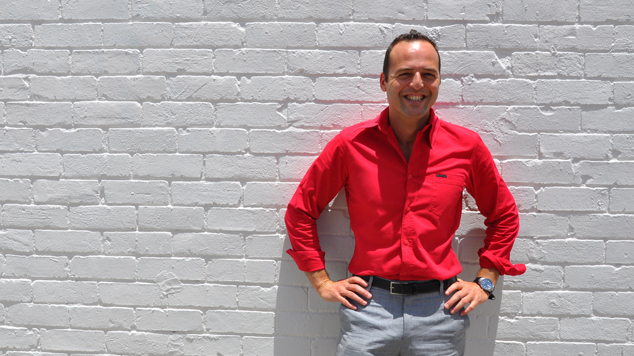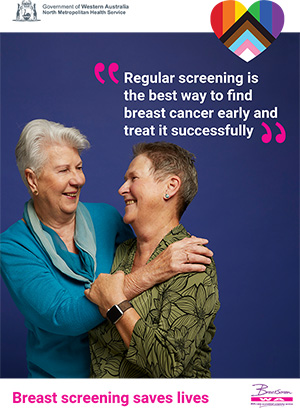 With ongoing reports of research that could potentially cure HIV/AIDS, what is the impact of ‘cure talk’ on prevention efforts? Most people whole heartedly embrace and applaud the research efforts that are being undertaken to cure HIV/AIDS by scientists all around the world. Most recently the media picked up on the good work being conducted by the Queensland Institute of Medical Research, where Associate Professor David Harrich reported on how they have altered a protein that HIV uses to replicate, thereby hindering its capacity to damage the immune system. The hope expressed was that this could lead to a one drug, once a day regime, instead of two or three drugs commonly used today. Although not technically a cure (that would remove all virus from the body), a functional cure aims to permanently suppress viral replication, while restoring the immune system to normal so that AIDS symptoms never happen.
With ongoing reports of research that could potentially cure HIV/AIDS, what is the impact of ‘cure talk’ on prevention efforts? Most people whole heartedly embrace and applaud the research efforts that are being undertaken to cure HIV/AIDS by scientists all around the world. Most recently the media picked up on the good work being conducted by the Queensland Institute of Medical Research, where Associate Professor David Harrich reported on how they have altered a protein that HIV uses to replicate, thereby hindering its capacity to damage the immune system. The hope expressed was that this could lead to a one drug, once a day regime, instead of two or three drugs commonly used today. Although not technically a cure (that would remove all virus from the body), a functional cure aims to permanently suppress viral replication, while restoring the immune system to normal so that AIDS symptoms never happen.
Animal trials are due to start early this year and even though strong results are expected; any material drug for treatment would be many years away. Placing primary research apart, the protracted time it takes to bring a drug to market is mostly due to clinical trial processes necessary for drug approval, which typically involves a variety of phases. From small (10-15) in human trial to test pharmacodynamics (what the drug does to the body) and pharmacokinetics (what the body does to the drugs), to a trial to test and confirm effectiveness and to monitor for side effects (normally involving 1000-3000 people).
After more than 30 years, the community, people with HIV as well as many scientists are calling for efforts towards a cure be hastened. This culminated in 2011 with The Rome Statement for an HIV Cure, where major HIV/AIDS Stakeholders called for HIV cure research to be accelerated. This year in Kuala Lumpur, the International AIDS Society will be hosting a June symposium titled Towards a HIV Cure. No doubt, cure talk will again become more noticeable during this time. As will the call from activists demanding that processes be improved so that the benefits of modern technology and synergistic collaboration could be fully realised. Much of the world is desperate for an accessible cure for HIV to be announced; it has already been almost 7 years since Timothy Brown known as the ‘Berlin Patient’ became the first person cured of HIV/AIDS.
After the cure discussion in the media has ensued, what community expectations are formed? Idealists and optimists might assume that a HIV cure is imminent and therefore efforts to maintain safe sex practices may no longer be necessary. If this perception is added to the view that current medication to treat HIV is already good enough for a long and productive life and to reduce the likelihood of transmission; then you have a very real challenge to the condom every time paradigm.
Cynics and sceptics are more likely to down play media reports of a potential cure to HIV. Their gaze is often fixed on the profit motive of researchers seeking funding arrangements and pharmaceutical company’s incentive to prolong and extend the HIV epidemic. Believing that a HIV cure is nowhere in sight, that sexual discrimination for having HIV is common, and knowing that not everyone does well on HIV treatment (even though most do), the cynics and sceptics may be more conservative when practising safe sex, ignoring bareback porn, the condom relic tag and not trusting people who claim to be clean.
Holding onto either view in the extreme can have negative consequences for the health of our communities. If you are too optimistic then you may be taking a greater risk than you realise. Increasing reports of unprotected sex with people of unknown HIV status, particularly in a casual setting is most probably one of the main drivers of the HIV epidemic in WA. The cynical view of treatments and its effectiveness can also have a negative impact, consider the Kirby Institute suggestion in its HIV Surveillance Report 2012, that the amount of people living with HIV on treatment could be as low as 53%. This means that an overly negative perception of treatments could be one of the main causes of a potentially high community viral load. Both views can adversely contribute to the HIV epidemic and lead to a rise in HIV infections.
While welcoming progress and research towards a HIV cure, endeavours to optimise what we know works today ought to be maintained. Some of these included; getting tested, getting treated and maintaining condom use. We know these simple messages are not enough to protect everyone, given some of our preferences and the complexity of our sexual practices, relationships and environments. Nobody’s choices are perfect all of the time, but hopefully they come from a place of being well informed and not biased to any particular extreme view.
Every now again friends and family may call or email you about some new potential cure they’ve just heard in the media. These moments are often a time to be grateful for their support and love no matter what your current HIV status. They are affirming the hope most of us have for ourselves and each other to live, loving, long, happy, and healthy lives. May we continue the cure discussion and evolve our research practice to accelerate the benefits of our combined ingenuity and knowledge, all the while being centred on optimising what is already known before us today. Who will be the first person in WA cured of HIV? Most likely it will be a brave soul who will choose to participate in a clinical trial.
Cipriano Martinez
Cipriano is a board member of the NAPWHA, read more of his writing at positiveadvocate.com





